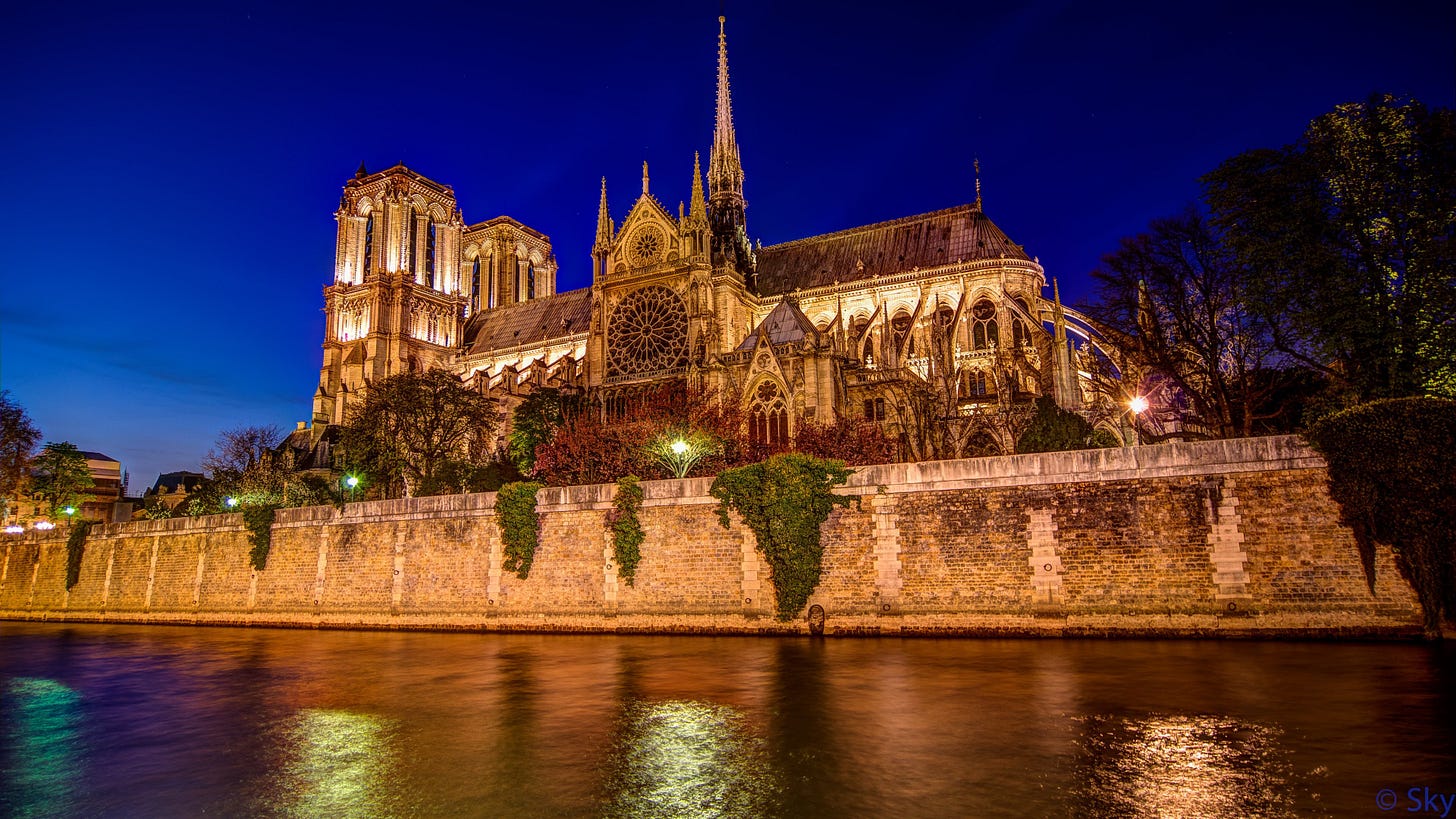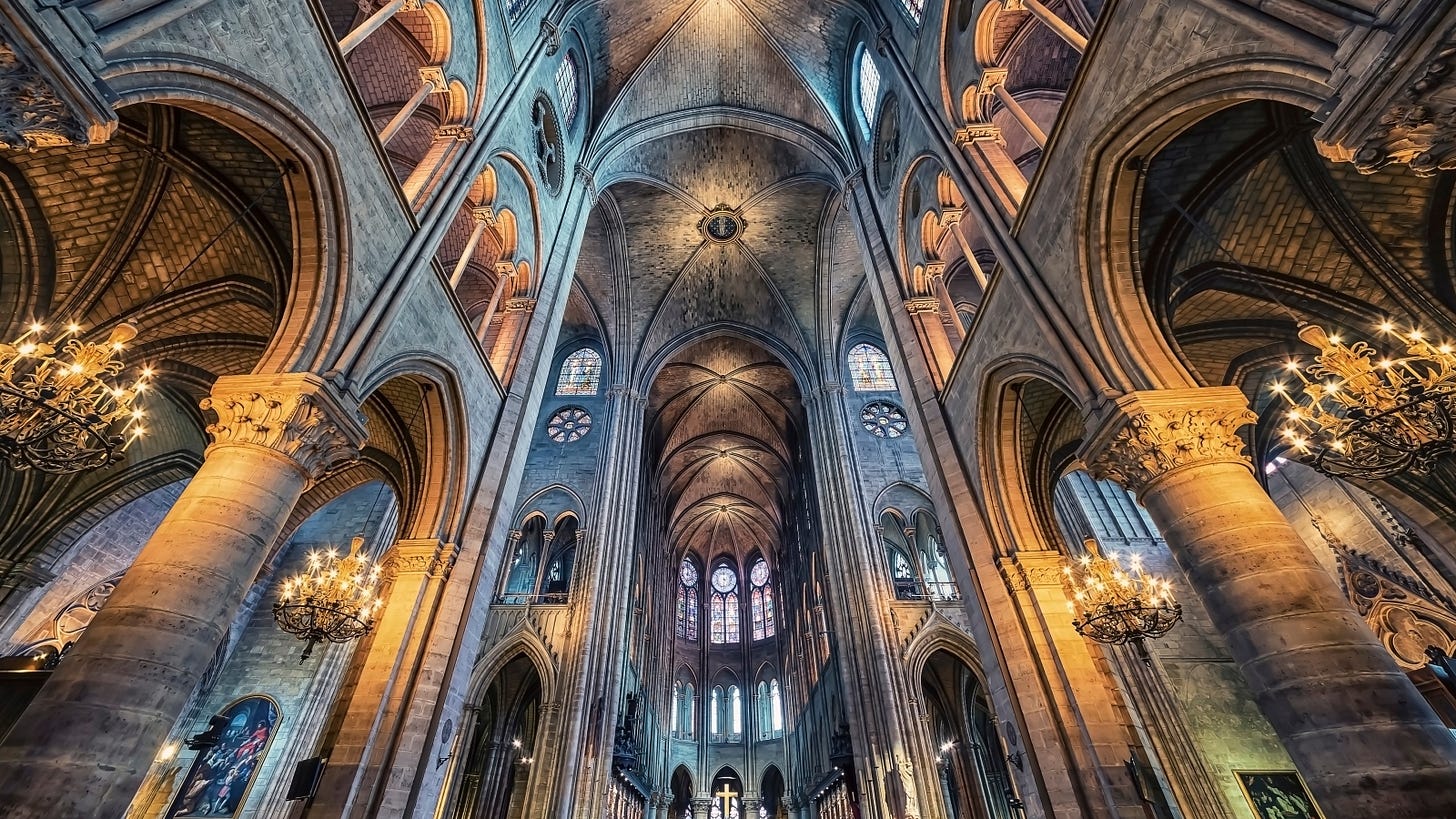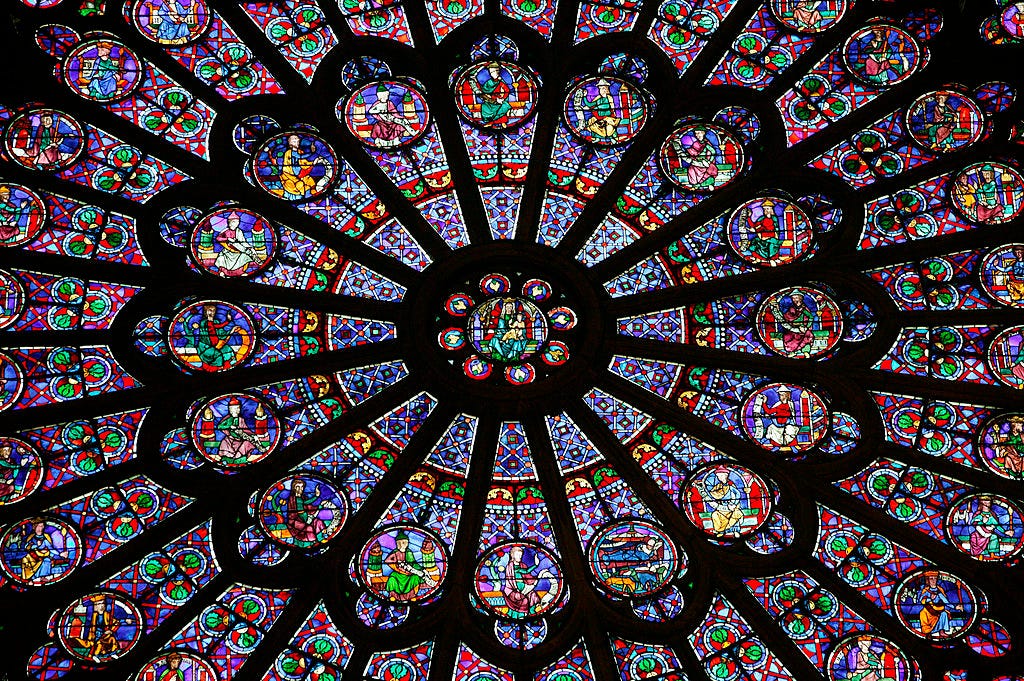The Aura of the Holy
Can a building create a sense of the Divine?
Image: wallpapersafari.com
Over five years ago, a terrible accident in France united swathes of the world in shock and mourning.
In itself, this is not that unusual: such a response is natural, even expected, whenever a tragic event takes place somewhere in the world. What’s unusual, however, is that, in this instance, nothing had happened to anybody. Nothing had even happened to a particularly famous and beloved animal.
It had happened to a building.
The Heart of Paris
The Notre Dame de Paris cathedral stands on a tiny island in the Seine River in the heart of France’s capital city. Since its construction began in 1163, it has withstood wars, plague, and revolution. However, in 2019, an accidental fire of uncertain origins nearly toppled it.
I expect plenty of people reading this to remember where they were when they first saw the images of Notre Dame ablaze. I was at work and called over by a colleague. A small group of us gathered around her laptop to view the footage, and we watched, in shock, as the cathedral’s wooden spire collapsed onto the roof of the building, engulfed in flame.
I know I wasn’t alone in feeling sick with fear. Would enough of Notre Dame survive for it to be restored to its former glory? Or were we bearing witness to the 850-year-old cathedral's last moments?
Even while we watched the footage, I was surprised by the intensity of my own and my colleagues' reactions. A collective sense of horror and grief had descended on us—all for a building. Clearly, we were not moved by pity for any great suffering since—as the cathedral had been evacuated—none was directly taking place. Naturally, the Parisians looking on were suffering, but it was the cathedral itself that we were feeling for.
What was it, then, that meant we could experience something like grief over the fate of a lifeless structure? I believe it was three interconnected things, each one as essential as the others.
The Presence of the Beautiful
Image: ar.inspiredpencil.com
The first factor is that we were feeling the loss of something truly beautiful.
This is an obvious reason because to describe Notre Dame as a thing of beauty is an understatement. Instead, it would be more accurate to describe it as a collective of beautiful things, some of them in the building, but many of them simply part of the building. Virtually every square foot of Notre Dame contains something fascinating, beautiful, or both, such that it would take weeks to fully appreciate every detail. There are the more obvious attractions, such as the gargoyles, paintings, and stained glass, but also the easily overlooked, such as the perfectly sculpted flying buttresses, which were – incredibly, to my mind – constructed with a comparably limited understanding of physics.
Beauty alone doesn’t account for the feeling of loss at seeing the cathedral burn, however – even such a rich and intense concentration of beauty as is contained in Notre Dame.
So, what else makes it so special?
The Presence of the Past
In addition to its beauty, the cathedral is a historical monument, and its weight of history lends it an incontrovertible richness. If Notre Dame were only very beautiful, that would be one thing. The fact that it is also centuries old and yet in near-pristine condition is quite another.
The power of historical weight can come as a surprise to the perceiver, as often it feels like (in the contemporary West, at least) the past is far less valued than the future, and what’s new is prized over what’s inherited.
This is understandable up to a point because, unlike the future, we cannot shape the past. We can reassess it, of course, and even make new discoveries, but the past as such is fixed in existence. It would be a mistake to think, however, that, as a result, the past is inaccessible and gone. As William Faulkner famously stated – albeit speaking through a character in his play, Requiem for a Nun – “The past is never dead. It’s not even past”. This is because the past survives in all of us and in all things. Indeed, the present is comprised of sedimented layers of the past, reflection on which need not be idle but rather meaningful, drawing as we can upon history’s depth.
The power of grand historical monuments like Notre Dame is partly that they embody the past in the present. Standing before and in it, one cannot help but imagine the craftsmen who carved and sculpted the cathedral with astonishing skill, yet only rudimentary means. Equally, there is an inescapable realisation that I am just the latest in a millions-long list of people who have visited and worshipped there over the centuries.
The Presence of the Holy
Image: news.artnet.com
This brings me to the final of the three interconnected factors explaining the magic of Notre Dame, which is its holy aura. A beautiful and historical artifact is a wonderful thing indeed, but a place that is beautiful, ancient, and built to embody a relationship to the divine is truly special.
In a cathedral like Notre Dame, the light itself has an aura streaming down from the stained-glass windows high in the vaulted nave. From within, the building opens a space that cannot be reduced to its mathematical dimensions. Such space takes on a different quality entirely when framed by the pointed limestone arches. It is in this interplay of light and stone, human craft, and natural potential that the holy can be felt.
I say ‘can be felt’, rather than ‘is present’, since those of us who do not share the Catholic faith cannot say with conviction that the holy is indeed present there. However, the mere fact that, for over eight centuries, millions of people have felt the presence of God in Notre Dame is enough: the cathedral has an unmistakable aura even for the atheist, agnostic, or follower of another faith.
The wonderful news is that, as of its reopening on December 7th, Notre Dame has indeed been restored to its former glory. The televised reopening, led by President Macron, revealed that Notre Dame's stone is cleaner and windows brighter than they have been for many centuries, while the most prized features, such as the rose window, remain as wondrous as ever.
At this time of year, when those of us raised as Christians contemplate our relation to that religion and the particular historical account it provides, the world takes on a slightly more special glow. Fairy lights twinkle in the afternoon darkness, and breath rises like steam in the cool air. The news that Notre Dame de Paris was not only saved from disaster but restored to breathtaking splendour by the skilled work of thousands of craftsmen cannot help but take on a holy aura.
Click here to watch The Heart Revolution.
Click here to join this Sunday’s Q&A.








This wonderful piece captures how the material can be a lens to the spiritual. Nicely done!
Yes, I agree! I love your essay so much! I watched the footage on YouTube of the reopening of Notre Dame and watched the first Mass said there and felt a solace and peace of soul that I have not felt at all on 2024, due to all of the terrible happenings all over the world and in this country. Even now, reading your essay, I am crying for all of the losses ahead of us and the killings and the suffering of so many innocent people and women and especially the children. I am lucky enough to be able to pray and envision returning to Paris to walk into Notre Dame again one morning early, to see the sun rise behind the Rose 🌹 Windows. But I want to leave tomorrow because I have so little faith right now in the future. I thank all of the wonderful, skilled and dedicated craftsmen and women and workers and painters who have restored Notre Dame within a miraculous period of 5 years. I hope and pray that Notre Dame will remain on earth for centuries more and will bring love and honor for the spiritual 🙏 to mankind during this troubling year. Thank you again for your beautiful essay. 🌹💐❤️💛🌟✨️🙏